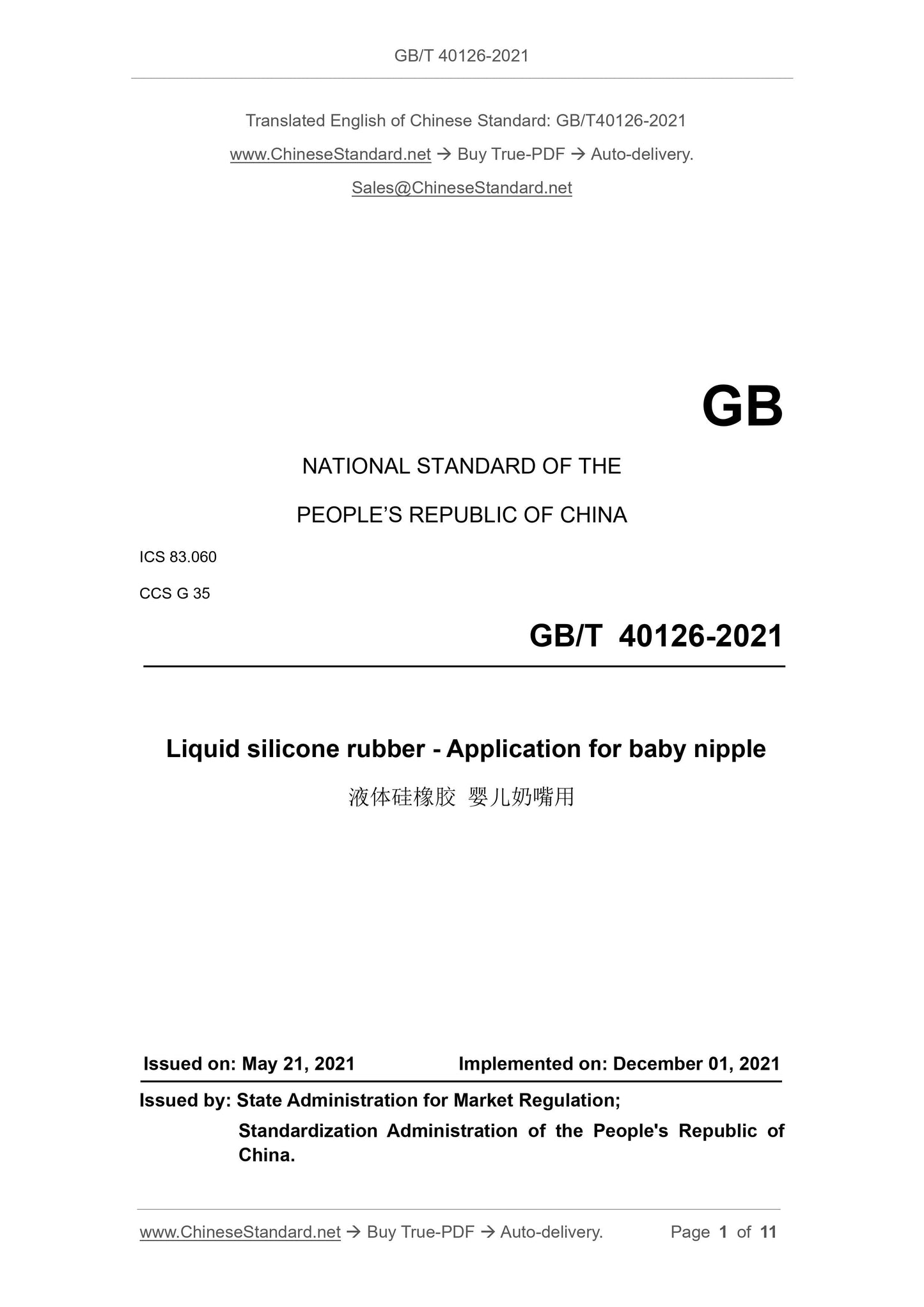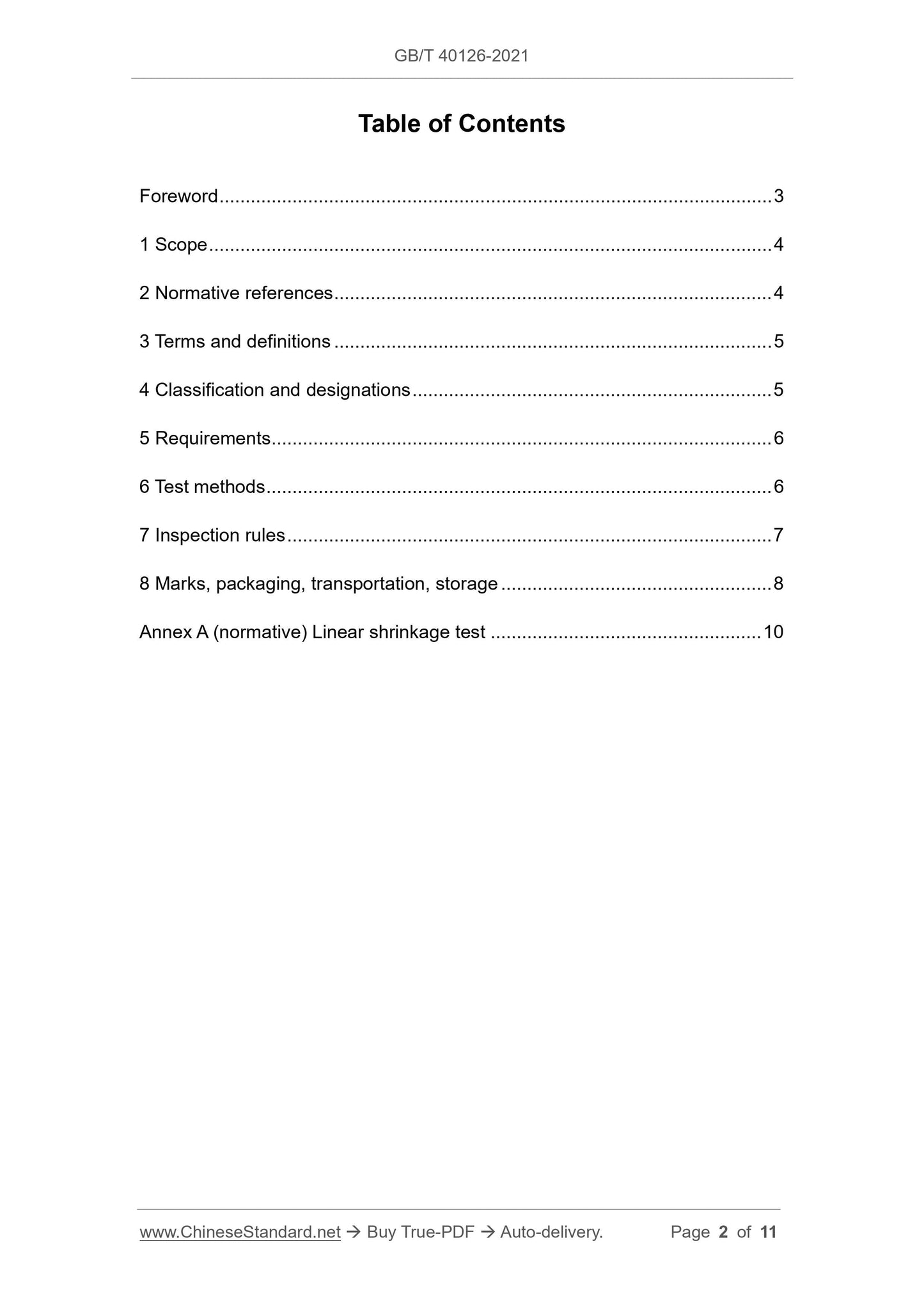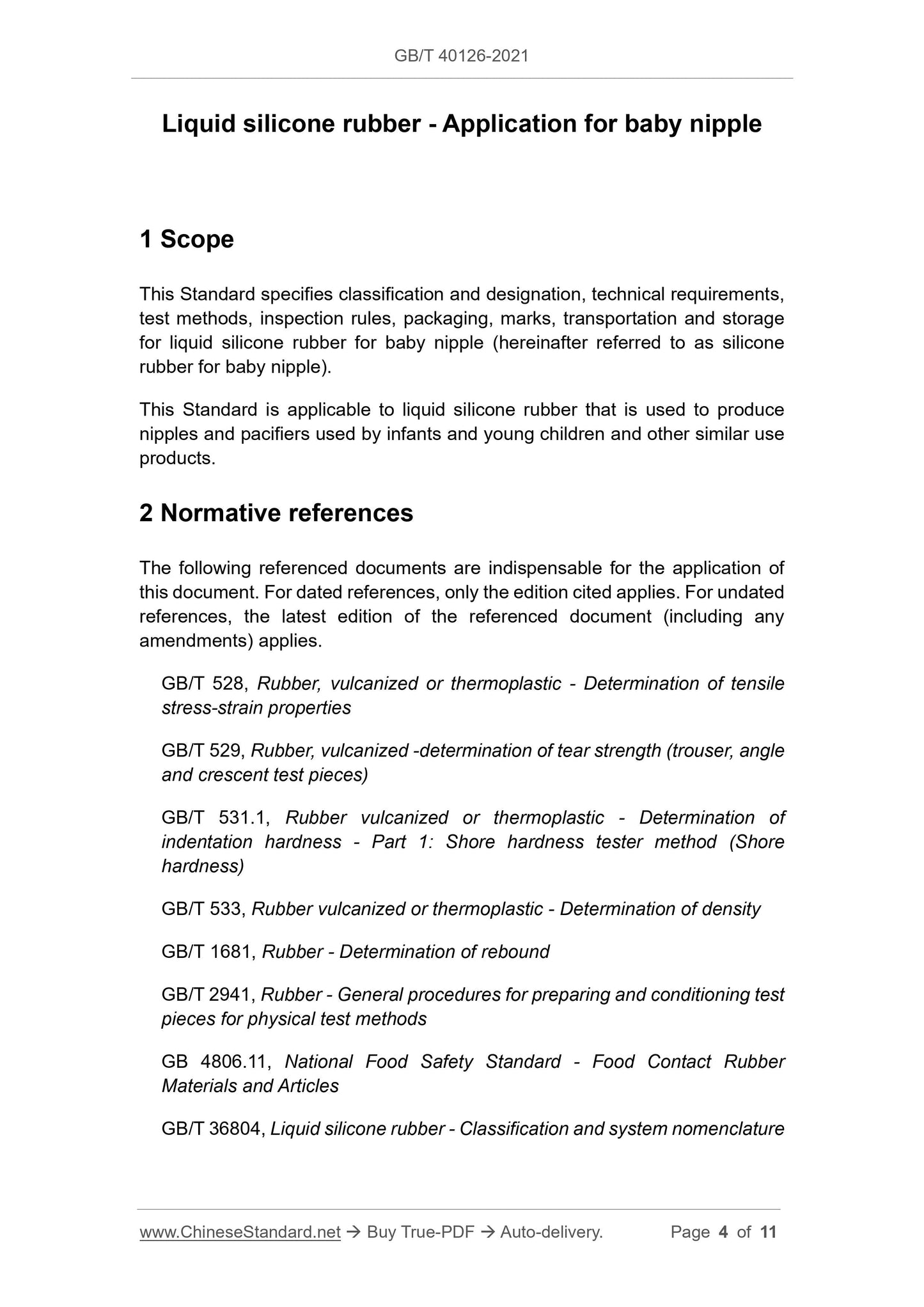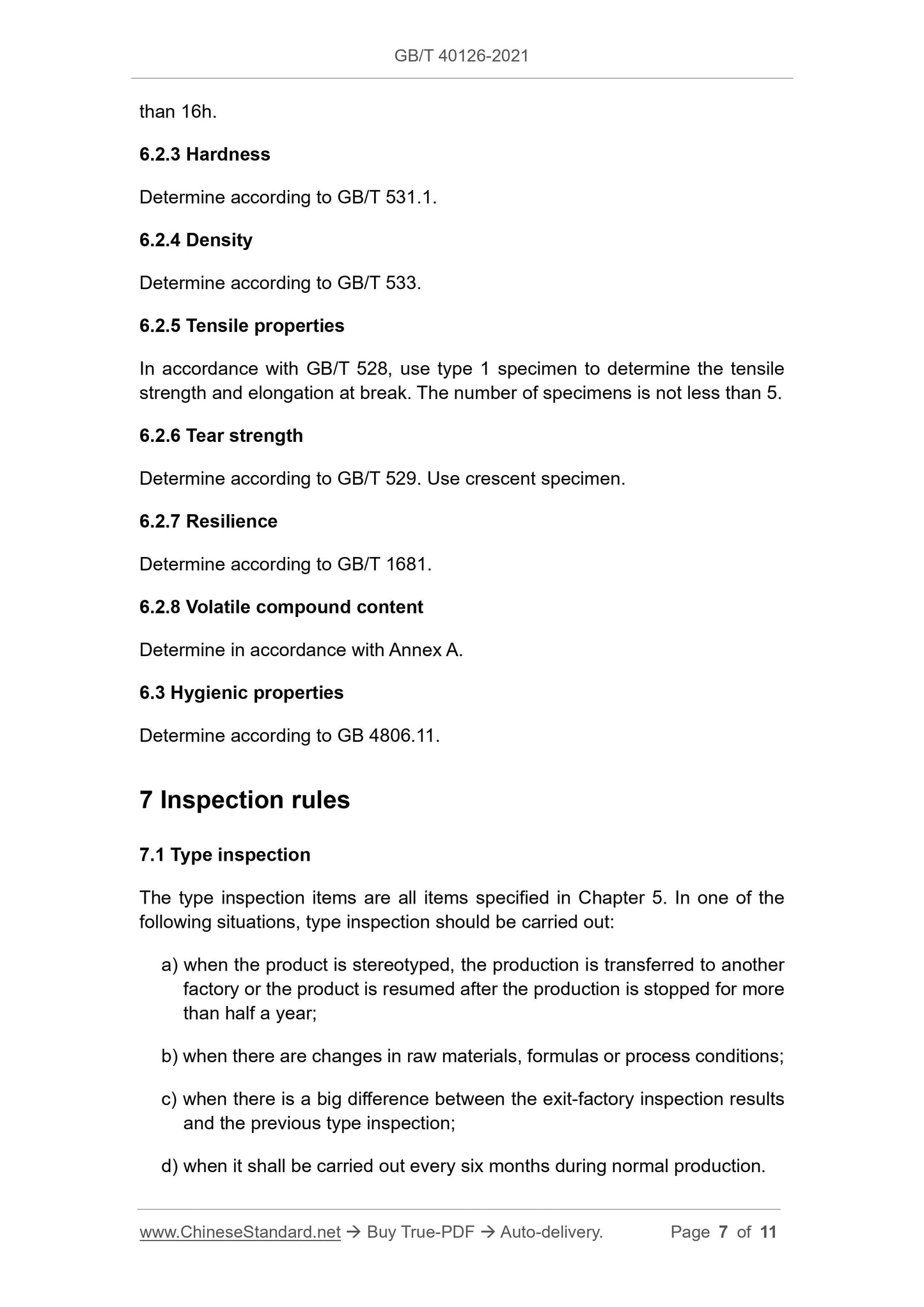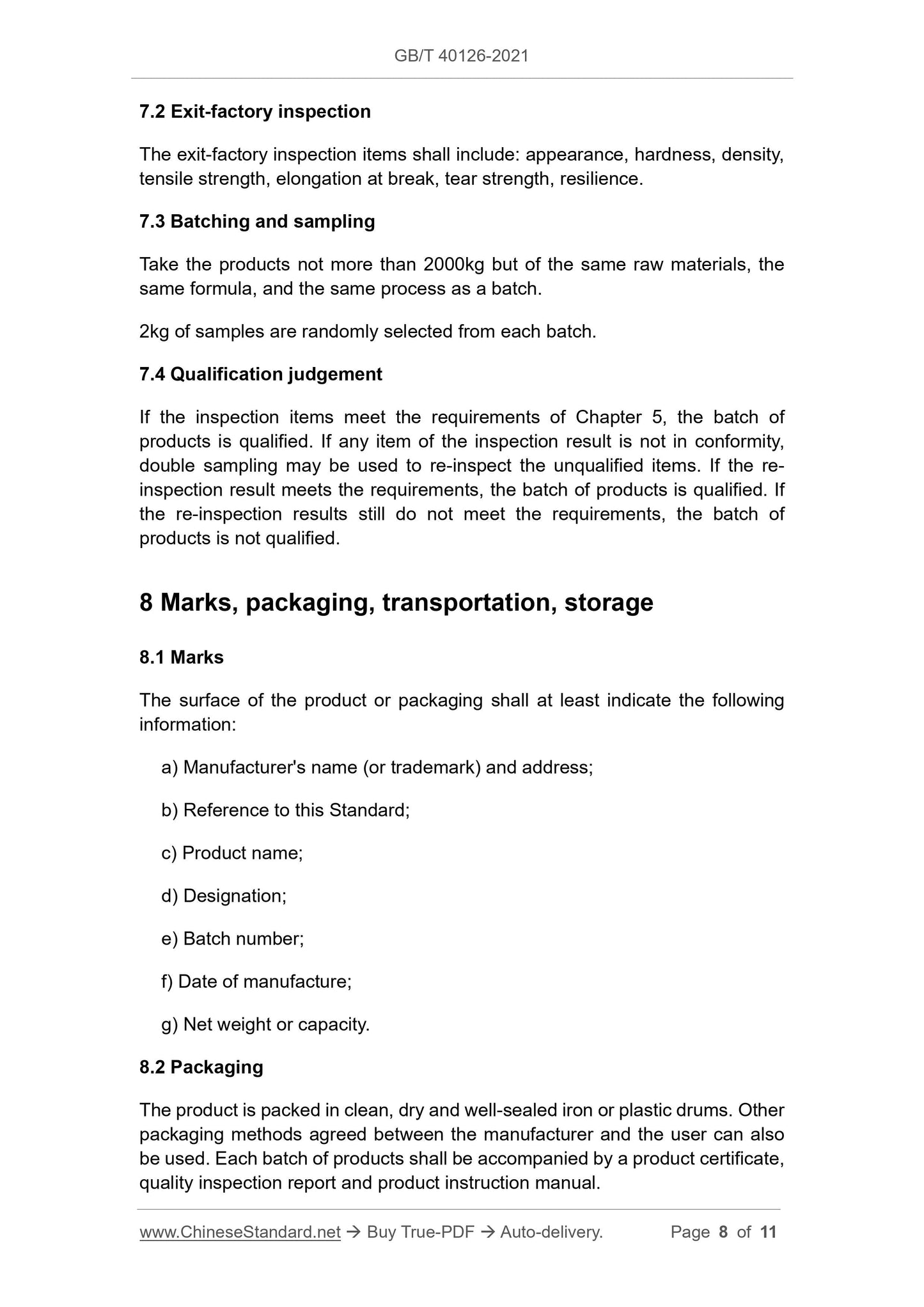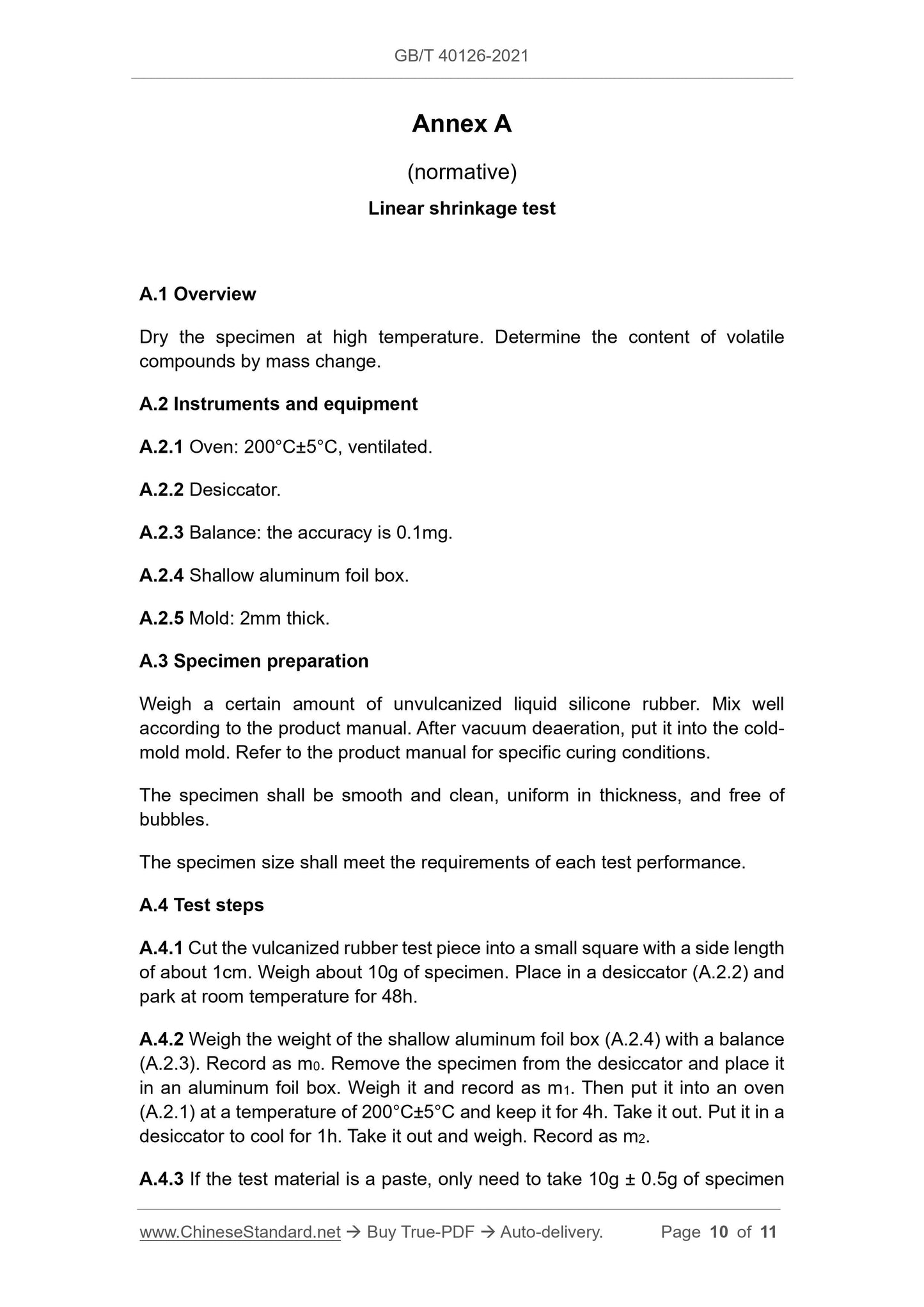1
/
of
6
www.ChineseStandard.us -- Field Test Asia Pte. Ltd.
GB/T 40126-2021 English PDF (GB/T40126-2021)
GB/T 40126-2021 English PDF (GB/T40126-2021)
Regular price
$155.00
Regular price
Sale price
$155.00
Unit price
/
per
Shipping calculated at checkout.
Couldn't load pickup availability
GB/T 40126-2021: Liquid silicone rubber - Application for baby nipple
Delivery: 9 seconds. Download (and Email) true-PDF + Invoice.Get Quotation: Click GB/T 40126-2021 (Self-service in 1-minute)
Newer / historical versions: GB/T 40126-2021
Preview True-PDF
Scope
This Standard specifies classification and designation, technical requirements,test methods, inspection rules, packaging, marks, transportation and storage
for liquid silicone rubber for baby nipple (hereinafter referred to as silicone
rubber for baby nipple).
This Standard is applicable to liquid silicone rubber that is used to produce
nipples and pacifiers used by infants and young children and other similar use
products.
Basic Data
| Standard ID | GB/T 40126-2021 (GB/T40126-2021) |
| Description (Translated English) | Liquid silicone rubber - Application for baby nipple |
| Sector / Industry | National Standard (Recommended) |
| Classification of Chinese Standard | G35 |
| Word Count Estimation | 10,197 |
| Issuing agency(ies) | State Administration for Market Regulation, China National Standardization Administration |
Share
